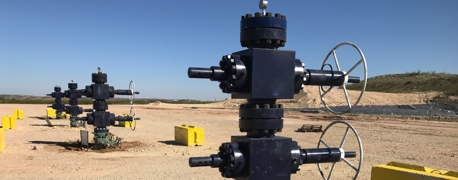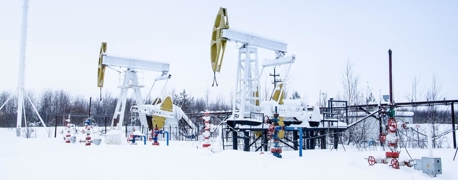How Flash Floods Make Oil Pipelines More Dangerous

When you think of flash floods, damage to natural gas pipelines is probably not the first thing that comes to mind. However, there are about 3 million miles of gas pipelines running throughout our communities, near our homes, and along our roadways. These pipes link natural gas production and storage facilities to consumers nationwide, and they delivered about 27.7 trillion cubic feet of gas in 2020 alone. They can be severely damaged and may even explode as a result of flash flooding, endangering our homes, the environment, and our very lives.
Let’s take a closer look at flash floods, why they happen, and how they can cause devastating pipeline explosions. We’ll also consider what oil and gas companies can do to prevent flash flood pipeline damage in the first place.
About Flash Flooding
The National Weather Service describes flash flooding as “flooding that begins within 6 hours, and often within 3 hours, of the heavy rainfall (or other cause).” Flash flooding can happen anywhere. It can happen in big cities, small towns, and in the middle of nowhere. Whether it happens will depend on the amount of rainfall, the lay of the land, vegetation, the type of soil, and numerous other factors. In some situations, the same amount of rainfall over an urban area can cause flash flooding more than in the countryside or a suburban area because there is nowhere for the water to go; it cannot sink into the soil because there is none.
When it comes to flash flooding, the central problem is drainage. When rainfall exceeds an area's ability to drain the water safely, you have the potential for a flash flood. Rain drainage is linked to a number of infrastructure and weather-related factors.
Here are some of the worst factors for flash flooding:
- Intense rainfall: The most common cause of flash flooding is intense rainfall over a short period of time. When rain falls faster than it can be absorbed by the ground or drained away by rivers and streams, it accumulates on the surface, causing floods.
- Topography: The shape and slope of the land also play a role in causing flash floods. Areas with steep terrain or narrow valleys are particularly vulnerable to flash floods, as they can channel water quickly and efficiently.
- Soil type: The type of soil in an area can affect how quickly water is absorbed and drained away. Areas with compacted soil, such as urban areas or areas with a lot of pavement, are less able to absorb water and more likely to experience flash floods.
- Land use: Human activities such as deforestation, urbanization, and development can also contribute to flash flooding. These activities can alter the natural drainage patterns of an area, leading to more runoff and less absorption of water.
- Climate change: Climate change is also a factor that can contribute to flash flooding. As the climate warms, extreme weather events such as heavy rainfall are becoming more frequent and intense, leading to an increased risk of flash flooding in many areas.
Flash floods are the result of natural and human factors, and it is important to understand these factors in order to mitigate the risks and prevent damage and loss of life.
How Rain & Flooding Affects Pipelines
Heavy rain and flooding change the weight and density of soil. If there is a pipeline underneath, changing soil conditions – particularly those caused by floods – could cause the pipe to bend and shift. Over time, such movement can eventually thin the metal and cause a rupture, similar to how bending an aluminum can over and over again will cause it to break. In severe storms, it could take a single flood or landslide to rupture a pipeline.
Pipelines that are buried in frequently waterlogged areas may actually “float” underground, and some operators attempted to address that problem by adding weights. These weights, however, were attributed to a 210,000 gallon Keystone line spill in South Dakota in 2017, according to a preliminary report by the Pipeline and Hazardous Materials Safety Administration (PHMSA).
Another risk flooding poses to pipelines is when it washes away the soil above and below a pipeline, unearthing it. This erosion can happen quickly, exposing pipelines to damage caused by floodwaters and the debris they bring, such as uprooted trees.
Both storage tanks and pipelines can be affected by flooding. In 2013, when parts of Colorado experienced over 15 inches of rainfall in just 8 days, many referred to it as the “100-year flood.” More than 51,000 oil and gas wells were in operation in the affected areas, and although operators stopped production, the flooding had disastrous results. There were 17 releases of produced water (the water that is produced during oil and gas extraction), totaling 26,385 gallons. There were 15 releases of oil, totaling 43,134 gallons.
Health Risks Posed by "Produced Water" Spills
Produced water contains a variety of chemical and biological contaminants that pose health hazards to both humans and the environment. These health hazards can find their way into the soil, groundwater sources, or rivers if pipelines are not sufficiently protected from flash flooding. Everything from the air to the wildlife gets poisoned by the chemicals within produced water.
Here are just a few of the potential health hazards associated with produced water:
- Chemical contaminants: Produced water can contain high levels of chemicals such as benzene, toluene, ethylbenzene, and xylene, which are collectively known as BTEX. Exposure to these chemicals can cause a range of health problems, including respiratory issues, dizziness, headaches, and even cancer.
- Radioactive materials: Produced water can also contain naturally occurring radioactive materials (NORMs), such as radium and uranium, which can be released during the extraction process. Exposure to NORMs can increase the risk of cancer, genetic mutations, and other health problems.
- Microorganisms: Produced water can contain bacteria, viruses, and other microorganisms that can pose a risk to human health. Some of these microorganisms can cause skin and eye infections, while others can cause more serious illnesses such as pneumonia and meningitis.
- Salinity: Produced water can be highly saline, with salt concentrations that are much higher than those found in seawater. Exposure to high levels of salt can lead to dehydration and other health problems.
- Other contaminants: Produced water can also contain other contaminants such as heavy metals, hydrocarbons, and pesticides, which can pose a range of health hazards depending on the specific chemical involved.
Overall, the health hazards posed by water used in oil and gas extraction are a significant concern for public health and the environment. Proper treatment and disposal of produced water are essential to minimizing these risks and protecting human health and the environment.
Are Flash Floods Getting More Common?
Climate change can contribute to flash flooding in a number of ways.
As global temperatures rise, the Earth's atmosphere can hold more moisture, leading to more frequent and intense precipitation events. This means that when it does rain, more water is likely to fall in a shorter period of time, increasing the risk of flash flooding.
In addition to increased precipitation, climate change can also alter the timing and distribution of rainfall. For example, in some areas, climate change may cause longer periods of drought followed by sudden, heavy rainfall events. This can make the ground less able to absorb water, increasing the risk of flash flooding when rain does finally arrive.
Climate change can also affect the physical characteristics of the land and water systems that can lead to flash flooding. For example, melting glaciers and ice caps can contribute to rising sea levels, leading to increased flooding in coastal areas. Changes in land use, such as deforestation or urbanization, can alter the natural drainage patterns of an area, leading to more runoff and less absorption of water.
Flash Flooding Risks Increase in Dry Areas
A recent example would be the Pakistan floods last year. According to the Financial Times, historic flooding was not only caused by heavy rainfall, but by a preceding period of extreme drought that made the ground dense and arid. Instead of water absorbing into the soil gradually, a massive amount of water hit hard-packed dirt, causing an inland sea to appear virtually overnight.
Finally, climate change can also contribute to the occurrence of extreme weather events such as hurricanes, cyclones, and typhoons, which can bring intense rainfall and cause flash flooding. These events are expected to become more frequent and more severe as global temperatures continue to rise, highlighting the urgent need for action to mitigate the impacts of climate change and reduce the risk of flash flooding.
The San Jacinto River Fire of 1994
The effect of flooding on natural gas pipelines is not a new issue. Perhaps the biggest flood-related pipeline disaster in the United States occurred on October 20, 1994. Over the course of a few days, a storm system dumped more than 30 inches of rain over the Houston area in Texas, swelling the San Jacinto River out of its banks and into the neighborhoods nearby. As the floodwaters began to recede, a 40-inch pipeline ruptured. Hundreds of thousands of gallons of gasoline spilled into the river.
That was just the beginning, however. Several other pipelines also ruptured, and within a matter of hours, natural gas, diesel fuel, and crude oil had ignited and moved downstream, a burning mass that took nearly a week to die out. Flames shot 100 feet into the air. Boats and homes along the San Jacinto River burned. Dozens of people were treated for smoke inhalation and burns.
Why did the pipelines rupture? Before the river flooded and swelled, the pipelines were on the bank under about three to four feet of soil. Officials believed that the current washed the dirt away from around the pipes, causing them to collapse under their own weight. It was also believed that something could have struck one or more of the pipes as it was carried downstream by the swollen river.
Other Pipeline Explosions Caused by Flash Flooding
It’s been nearly 30 years since the San Jacinto River fire, and yet flash flooding continues to affect pipelines across the United States.
These are just a few recorded examples of pipeline ruptures, fires, and explosions that occurred as a result of flooding:
- On October 21, 2016, localized flooding and soil erosion caused a pipeline rupture that led to the release of more than 1,200 barrels of gasoline into Loyalsock Creek in Pennsylvania.
- On January 9, 2018, a 22-inch pipeline in Montecito, California ruptured due to heavy rains and flooding, causing a fire and explosion as well as the release of 12,000 MCF (1,000 cubic feet) of natural gas.
- On January 29, 2019, a 12-inch pipeline in Harrison County, West Virginia ruptured after it was moved 10 feet from its original location by a landslide that occurred about 150 yards away.
Are Pipeline Operators Responsible for Preventing Flood-Related Damage?
In 2019, the Pipeline and Hazardous Materials Safety Administration sent an advisory reminding pipeline operators to identify and address hazards posed by landslides and flooding. The warning references Code of Federal Regulations (CFR) § 192.317(a): “The operator must take all practicable steps to protect each transmission line or main from washouts, floods, unstable soil, landslides, or other hazards that may cause the pipeline to move or to sustain abnormal loads.”
Gas and hazardous liquid pipeline operators must consider flash flood and landslide risks, and they must take reasonable measures to prevent pipelines from being damaged by these. When they don’t, they put their workers and everyone in the area at risk. They also endanger the environment.
Consequences of Flooding & Pipeline Explosions
Pipeline explosions caused by flooding can contaminate rivers and groundwater, polluting the environment and causing irreparable damage to wildlife, livestock, crops, and the people who live and work in the area. People can also be seriously injured or killed in the explosions and resulting fires, and they may see their property burned to the ground.
The risks of flooding are only expected to increase. Climatologists predict that a warmer atmosphere will lead to 40% more heavy rain in the Midwest and that rising sea levels will lead to a 45% increase in the nation’s floodplains by 2100. Unfortunately, companies continue to build in flood-prone areas.
We rely on pipelines to bring natural gas to our homes, businesses, and factories. Pipeline operators must take it upon themselves to ensure that the pipelines they build – and the ones they’re responsible for maintaining – can withstand the environmental changes we’re seeing, including flash flooding.
- Categories


